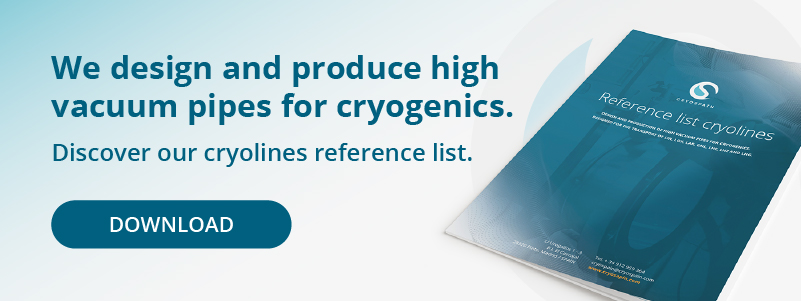Methanol heat pipes present an efficient solution for transferring substances at low temperatures. But what exactly are they, how are they made and what are their benefits compared to other systems? Keep reading to find out.
What exactly is a heat pipe and why use a methanol heat pipe?
A heat pipe is a device in charge of transferring heat between two solid or fluid interfaces. Using a phase-change principle and a volatile liquid in contact with thermally conductive solid surfaces, this mechanism efficiently manages heat transfer processes between a source and a sink.
The heat transfer takes the form of a repeated cycle: liquid turns into vapor by absorbing heat; it then condenses back into a liquid form by traveling along the heat pipe to a cold interface and releasing the heat.
Heat pipes are used across a number of sectors, from industrial processes to the military and aerospace sector and electronics manufacturing (as they are useful for cooling computers).
In most common heat pipe models, water operates within a temperature range of between 5°C and 150°C.
It’s in order to operate in wider temperature ranges that the methanol heat pipe comes in. This solution allows heat pipes to work below water temperature ranges: while certain ambient temperatures might freeze water and prevent heat pipes from working normally, a methanol transfer pump uses this element’s physical properties to operate in temperatures ranging from -60 to 80℃, without any performance disruptions.
As such, this type of solution effectively works as a cryogenic heat pipe.
What are the most common materials that heat pipes are made of?
Heat pipes require materials that present a high thermal conductivity or, in other words, materials that have the capacity to conduct or transfer heat and cold. For this reason, most heat pipes are made of copper, one of the most thermally conductive materials on Earth.
This copper coating is typically galvanized or nickel-plated, in order to reduce issues related to electric conductivity. At the same time, a vacuum is created in order to guarantee liquids don’t evaporate.
Heat pipes typically present a thickness of between 4 mm and 8 mm, although these values can be higher if a higher thermal conductivity is needed.
Related content: Cryogenic pipes: tips for choosing the right line size
Advantages and uses of methanol heat pipes
As mentioned above, methanol heat pipes provide companies with the possibility of operating in wider temperature ranges than other types of heat pipes.
This means upper working temperatures might reach 200°C, with the onset of permanent deformation starting at approximately such temperature values. At the same time, lower temperatures can reach values starting at -60 °C.
All in all, methanol heat pipes remain an efficient system for piping in extreme temperatures.
At Cryospain, we design and produce super-insulated pipes for cryogenics using high vacuum as part of our Cryoline solutions.
Designed for the transportation of various cryogenic substances (including LIN, LOX, LAR, LNG, LHe, and LH2) our pipe systems represent a reliable solution that protects these against risks such as entry of heat and gasification due to environmental factors during transfer between cold points.
Additionally, we also generate tailor-made cryogenic equipment according to the specific needs of our clients and guaranteeing an easy operation and maintenance.
Get in touch with us and find out about the right cryogenic solutions for your company.











 Contacte-nos
Contacte-nos